How To Find Laptop Ram Ddr Type
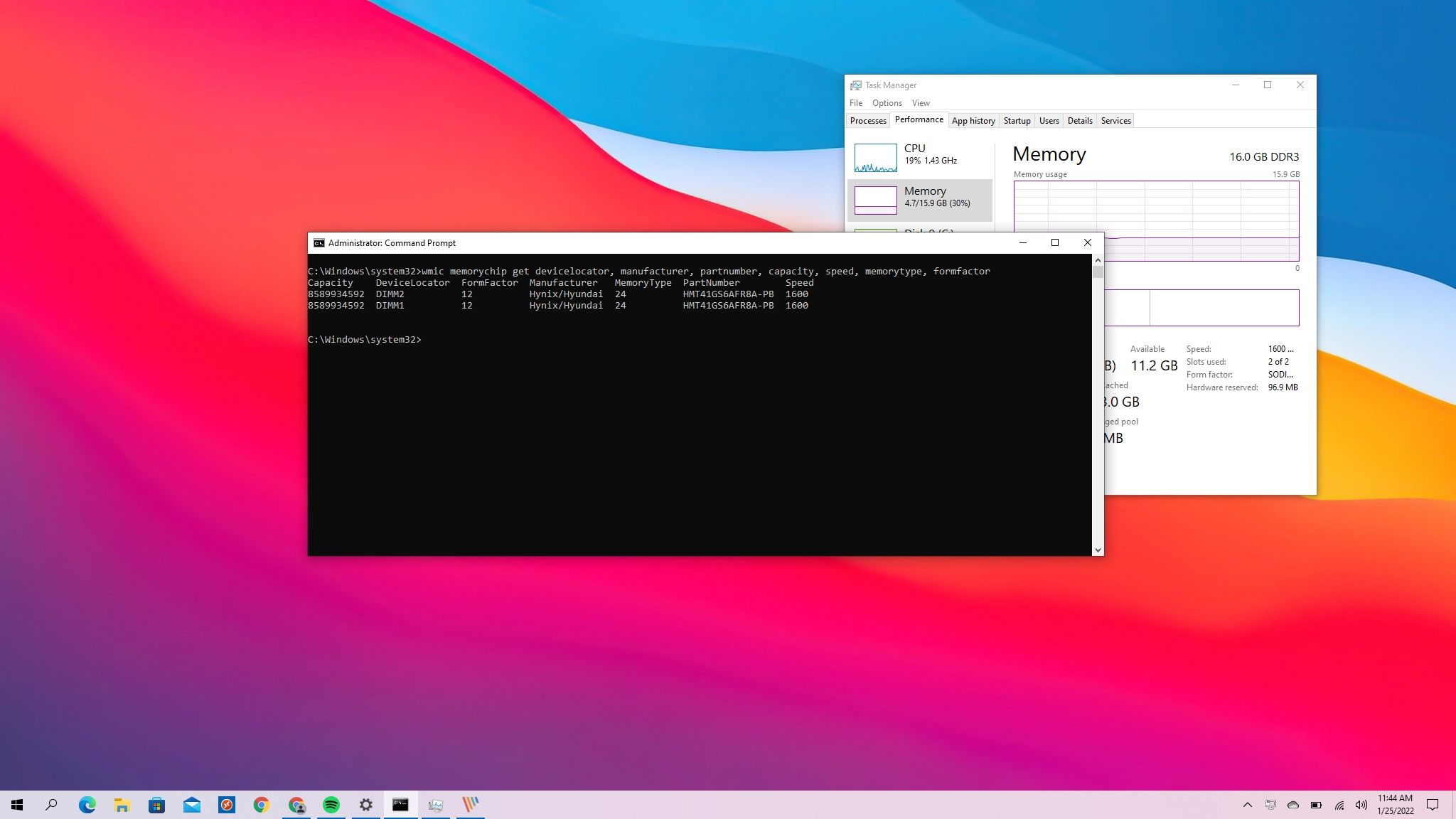 Source: Windows Key
Source: Windows Key
On Windows 10, the ability to cheque the memory's tech specs — RAM (Random Admission Memory) — installed on your computer tin can come up in handy in many situations. For instance, when yous take to troubleshoot hardware and software-related problems, and details like the manufacturer name, part number, and series number can be useful when contacting technical support.
If your device is degrading functioning as a outcome of retention-demanding applications or games, upgrading the retention tin can improve performance. Also, knowing the RAM specs can help determine the right size, speed, and brand to buy a compatible upgrade kit.
Or when adjusting the memory settings in the Unified Extensible Firmware Interface (UEFI) or Basic Input/Output System (BIOS), the RAM information in advance will also assistance you know if the configuration has been applied correctly.
Any the reason might be, Windows 10 provides all the necessary information using Command Prompt without the demand to open up the device or install 3rd-party tools.
Related: How to chop-chop determine memory slots available on motherboard on Windows ten
In this Windows x guide, we will walk you through the steps to learn the technical specifications of the RAM installed on your computer, including part number, manufacturer, series number, speed, capacity, form factor, memory blazon, etc.
How to check RAM specification using Command Prompt
While you can use Task Manager to view the retentiveness specs information, if you want to determine more specific details, such every bit manufacturer, part number, serial number, and more, then you have several commands.
Check retentivity manufacturer
To make up one's mind the memory modules brand installed on the calculator, use these steps:
- Open Start.
- Type Control Prompt, right-click the top result, and select the Run as administrator option.
-
Type the following command to check the retention manufacturer name and press Enter:
wmic memorychip get devicelocator, manufacturer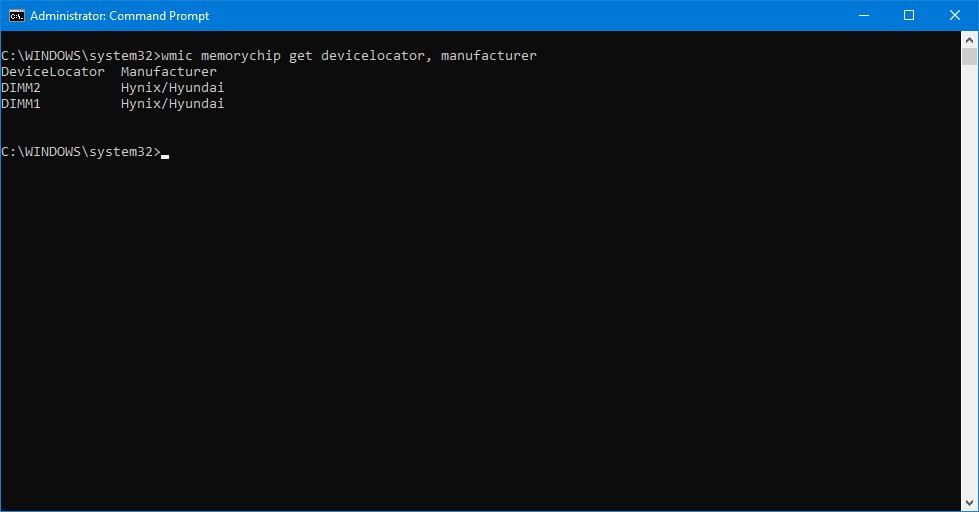 Source: Windows Central
Source: Windows Central - Confirm the memory make under the "Manufacturer" column.
Check memory part number
To detect out the office number of each memory module on Windows 10, use these steps:
- Open Start.
- Type Command Prompt, correct-click the top event, and select the Run every bit administrator option.
-
Type the post-obit command to determine the part number of the memory module and printing Enter:
wmic memorychip become devicelocator, partnumber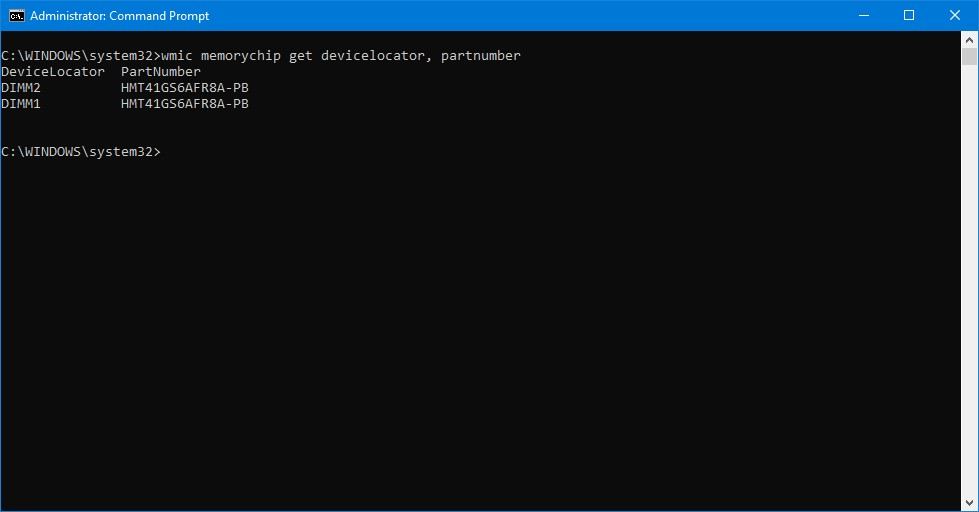 Source: Windows Central
Source: Windows Central - Confirm the product number under the "PartNumber" column.
If your desktop computer feels sluggish, a RAM upgrade is perchance 1 of the best means to meliorate system operation. If you're not sure which memory modules to purchase, our option for nearly devices is the Corsair Vengeance LPX DDR4 16GB Kit. It has reliable functioning and quality components, and it's affordable.
Our option
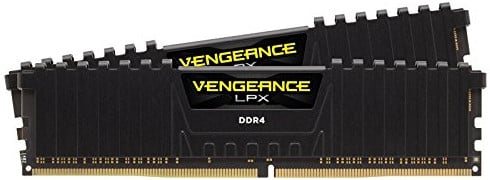
Corsair Vengeance LPX DDR4 16GB kit
Best of DDR4
Since most modern processors from AMD and Intel tin can operate stably at 3200MHz, this Corsair kit with two 8GB modules is an ideal choice for almost calculator builds.
Check memory serial number
To discover out the RAM series number on your computer, use these steps:
- Open Get-go.
- Type Control Prompt, right-click the top result, and select the Run every bit administrator option.
-
Type the following command to view the serial number for each memory stick and press Enter:
wmic memorychip get devicelocator, serialnumber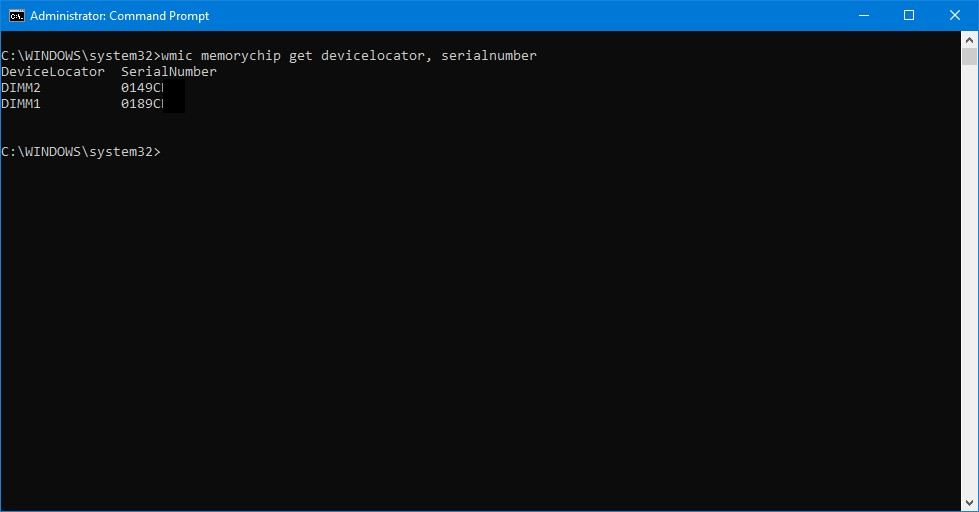 Source: Windows Central
Source: Windows Central Quick tip: In the command, you can also replace "devicelocator" with "banklabel" to list the serial number showing the bank'south concrete label where the retentivity is located on the motherboard. For instance,
wmic memorychip get banklabel, serialnumber - Confirm the product identifier under the "SerialNumber" column.
Check memory capacity
Using Control Prompt, you can determine the full capacity per module and the entire organization.
Determine capacity per memory module
To check each memory module chapters on Windows x, use these steps:
- Open up First.
- Type Command Prompt, right-click the peak upshot, and select the Run as ambassador option.
-
Type the following command to determine the memory chapters and printing Enter:
wmic memorychip get devicelocator, capacity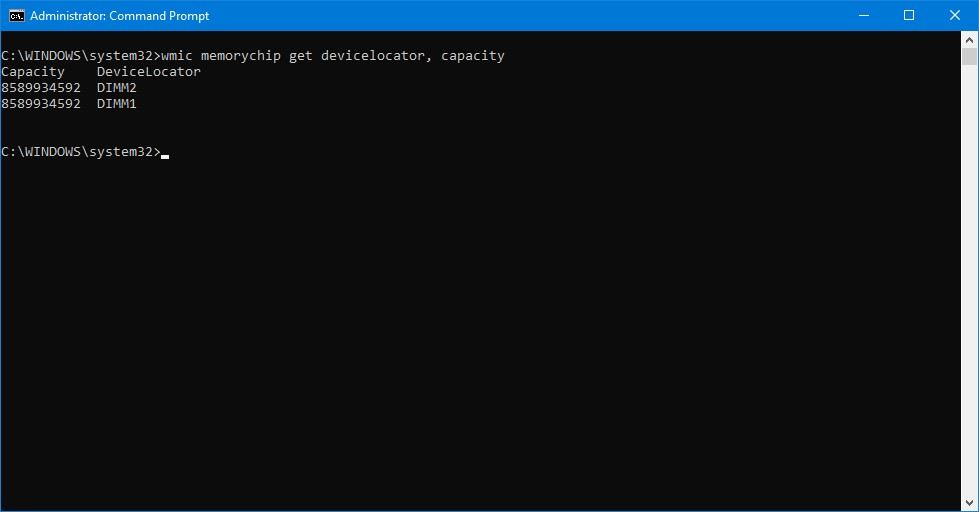 Source: Windows Central
Source: Windows Central -
Ostend the size of each retentiveness module under the "Capacity" cavalcade.
Quick tip: The capacity information is displayed in bytes, simply you can carve up the number by 1,073,741,824 (1 gigabyte in bytes) to convert the data into gigabytes.
Determine total system retentivity capacity
To find out the total corporeality of memory installed on the computer, use these steps:
- Open Start.
- Type Command Prompt, correct-click the acme result, and select the Run as ambassador option.
-
Type the following command to determine the total physical memory and press Enter:
systeminfo | findstr /C:"Total Physical Memory"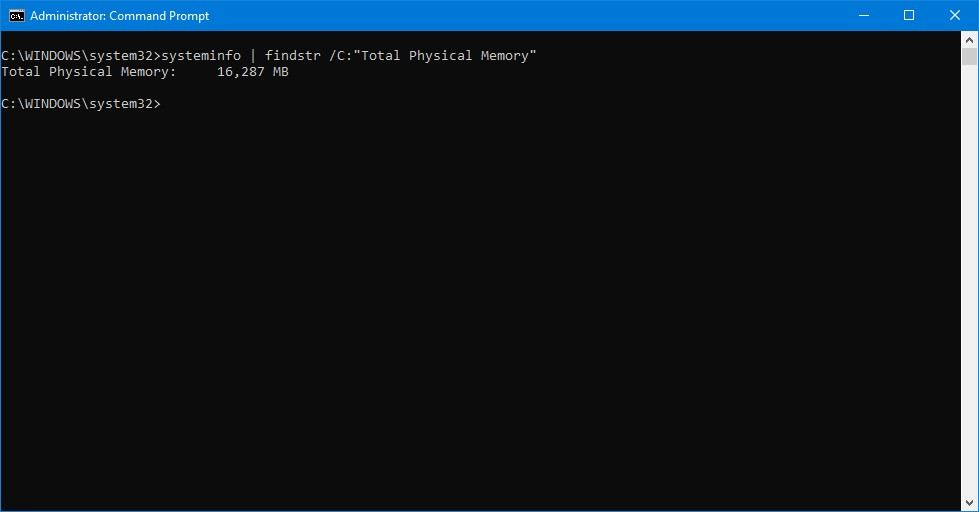 Source: Windows Central
Source: Windows Central - Ostend the total amount of physical memory (in megabytes) installed on the device.
Check retention module speed
To ostend the operating module speed, employ these steps:
- Open Start.
- Type Control Prompt, right-click the top event, and select the Run as administrator option.
-
Type the following command to determine the retentivity speed and press Enter:
wmic memorychip get devicelocator, speed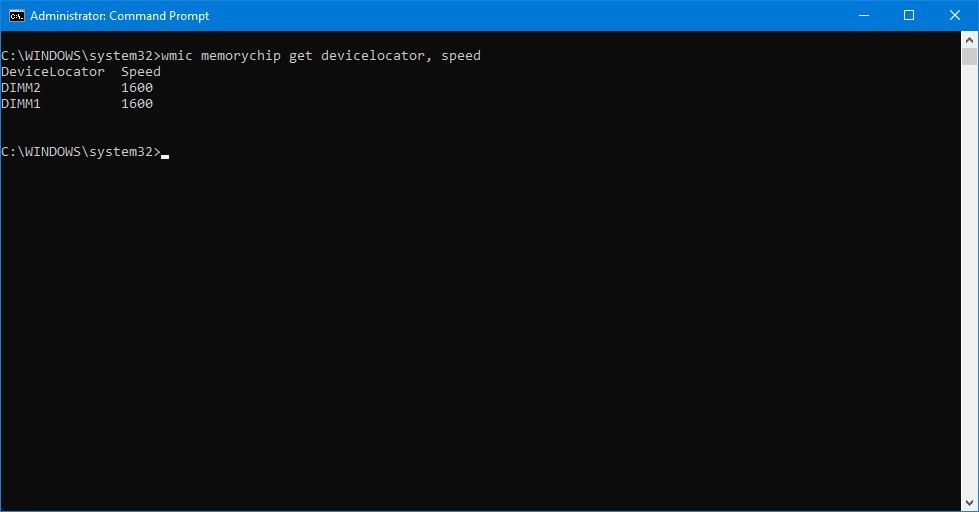 Source: Windows Fundamental
Source: Windows Fundamental - Confirm the speed of the memory modules (in MHz) under the "Speed" column
Check memory type
To cheque the organisation memory type on Windows 10, apply these steps:
- Open Start.
- Type Command Prompt, correct-click the top result, and select the Run as administrator option.
-
Blazon the post-obit command to determine the retention type and press Enter:
wmic memorychip go devicelocator, memorytype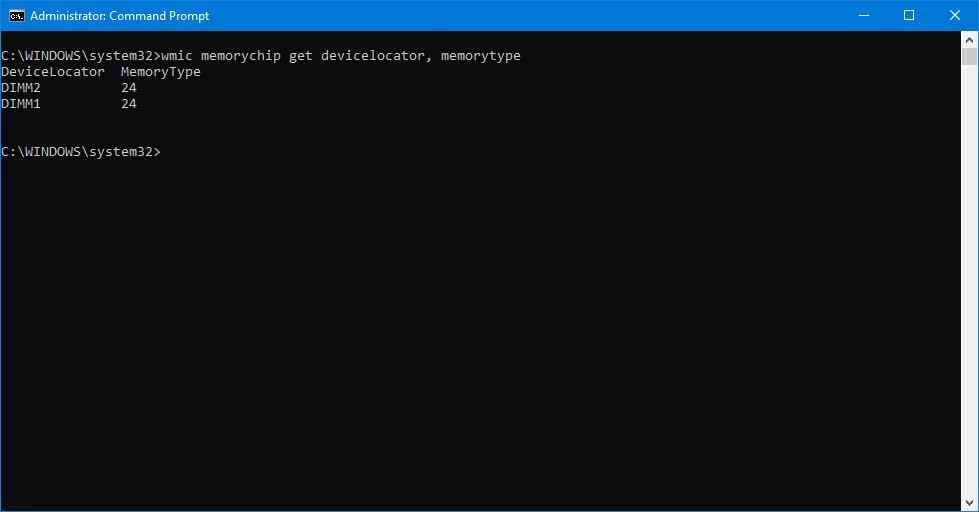 Source: Windows Primal
Source: Windows Primal - Nether the "MemoryType" column, confirm the number that identifies the blazon of retentiveness. (Run into listing below.)
Supported types
Memory types the command tin identify:
- 0: Unknown.
- 1: Other.
- 2: DRAM.
- 3: Synchronous DRAM.
- 4: Cache DRAM.
- 5: EDO.
- 6: EDRAM.
- 7: VRAM.
- 8: SRAM.
- ix: RAM.
- 10: ROM.
- 11: Flash.
- 12: EEPROM.
- 13: FEPROM.
- 14: EPROM.
- xv: CDRAM.
- 16: 3DRAM.
- 17: SDRAM.
- xviii: SGRAM.
- 19: RDRAM.
- 20: DDR.
- 21: DDR2.
- 22: DDR2 FB-DIMM.
- 24: DDR3.
- 25: FBD2.
- 26: DDR4.
Check retentiveness form factor
To check whether the modules are DIMM or SODIMM, use these steps:
- Open Start.
- Type Control Prompt, right-click the top result, and select the Run equally administrator option.
-
Type the following control to check the retentivity form factor and press Enter:
wmic memorychip get devicelocator, formfactor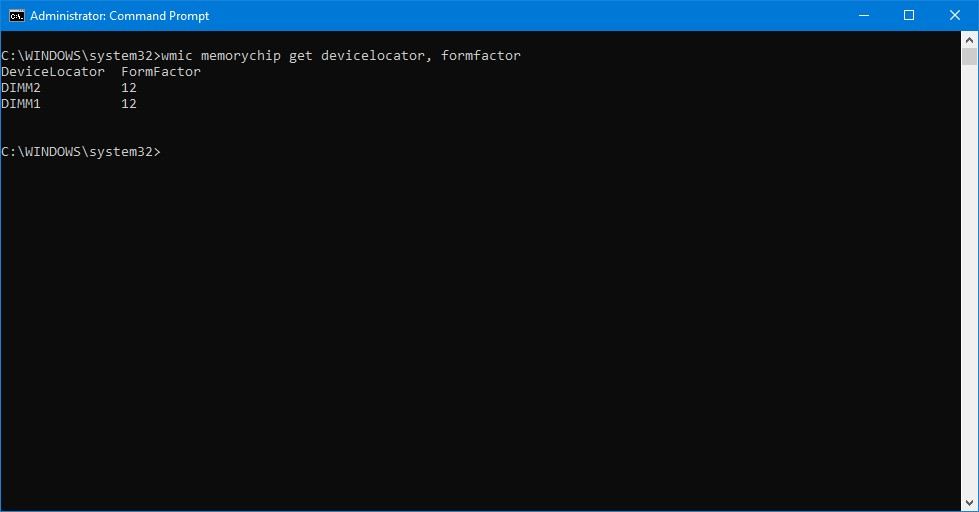 Source: Windows Central
Source: Windows Central -
Under the FormFactor cavalcade, confirm the form cistron information.
Quick note: If the output is 8, the device uses DIMM modules (typically available on desktops). Otherwise, if the control output the number 12, the reckoner uses SODIMM modules (usually available on laptops).
Supported form factors
Form factors the command can identify:
- 0: Unknown.
- 1: Other.
- ii: SIP.
- 3: DIP.
- 4: Zippo.
- 5: SOJ
- 6: Proprietary.
- 7: SIMM.
- eight: DIMM.
- 9: TSOP.
- ten: PGA.
- 11: RIMM.
- 12: SODIMM.
- 13: SRIMM.
- 14: SMD.
- xv: SSMP.
- 16: QFP.
- 17: TQFP.
- eighteen: SOIC.
- nineteen: LCC.
- 20: PLCC.
- 21: BGA.
- 22: FPBGA.
- 23: LGA.
- 24: FB-DIMM.
Check all memory details
The above commands help yous to decide the most useful information about the RAM installed on your figurer. However, in that location is another command you can use to query all the bachelor details at the same time.
To view all the memory details on Windows 10, so use these steps:
- Open up Start.
- Type Control Prompt, right-click the top result, and select the Run as administrator option.
-
Type the post-obit command to list every retentivity detail possible and press Enter:
wmic memorychip list full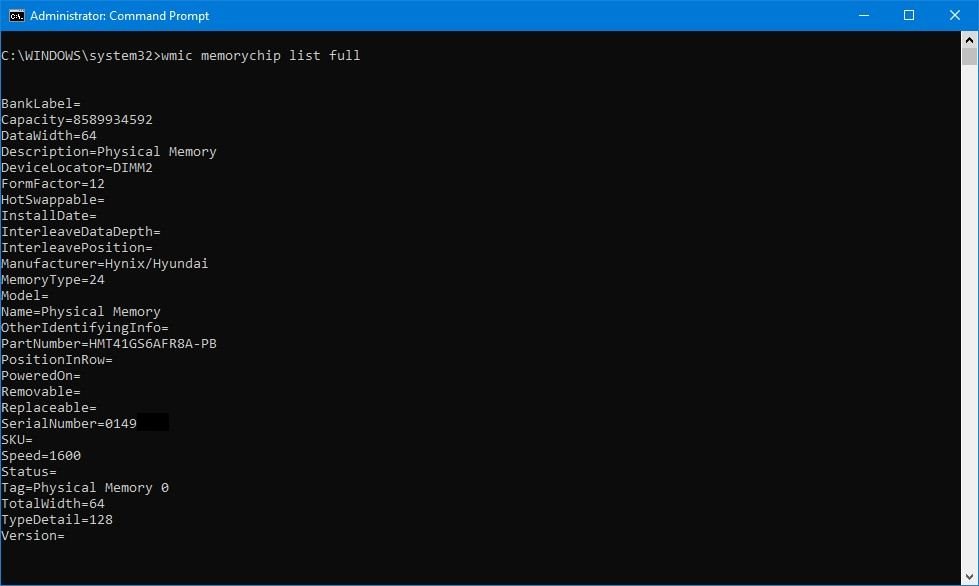 Source: Windows Central
Source: Windows Central - Confirm the available information for each memory module installed on the device.
-
(Optional) Type the post-obit control to view only the specific details and printing Enter:
wmic memorychip get devicelocator, manufacturer, partnumber, serialnumber, capacity, speed, memorytype, formfactor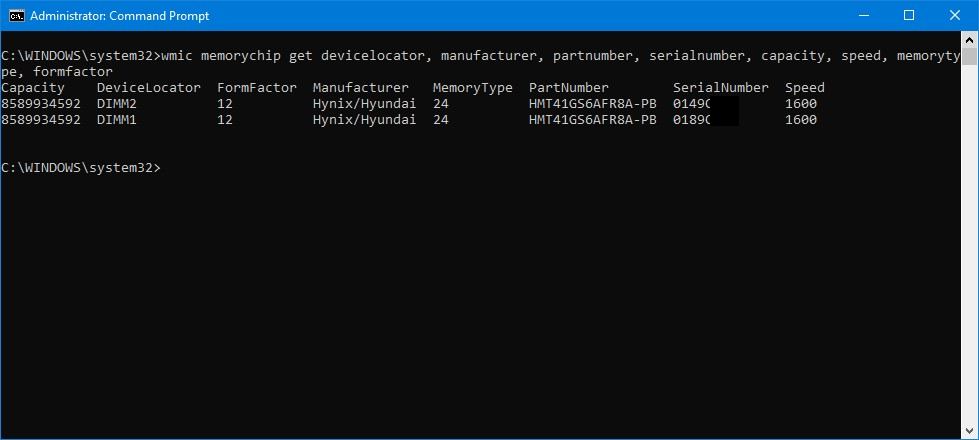 Source: Windows Primal
Source: Windows Primal - Confirm the memory information.
Once you complete the steps, you lot volition take many details about the memory modules installed on your Windows x device.
While you tin can use Command Prompt to query many details nigh the RAM specifications on your figurer, some data may not be available depending on the system'due south hardware.
More than Windows resources
For more helpful manufactures, coverage, and answers to common questions about Windows 10 and Windows 11, visit the post-obit resource:
- Windows 11 on Windows Central — All you need to know
- Windows eleven help, tips, and tricks
- Windows 10 on Windows Key — All you lot need to know
We may earn a committee for purchases using our links. Larn more.

Room to grow
Here's how Forza Horizon five could be even improve
Forza Horizon five is one of the all-time games of 2021, and one of the greatest racing games y'all can play. It'due south certainly not perfect, though, with plenty of areas with room for improvement. Here are five things Forza Horizon five could exercise better.
How To Find Laptop Ram Ddr Type,
Source: https://www.windowscentral.com/how-get-full-memory-specs-speed-size-type-part-number-form-factor-windows-10
Posted by: richiesalmor1959.blogspot.com












0 Response to "How To Find Laptop Ram Ddr Type"
Post a Comment